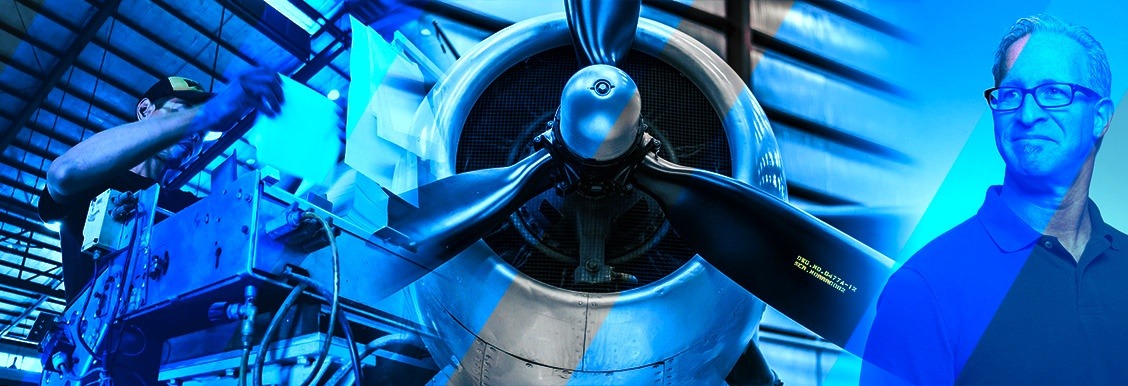One Simple Step that Improves Manufacturing Productivity
Your shop floor hides dangers that eliminate more than 13 hours of productivity each week for every employee. Learn how you can quickly improve...
3 min read
David Oeters : October 20, 2016 at 10:54 AM

 CIMx recently attended a manufacturing trade show and had the opportunity to speak with manufacturers about their industry concerns.
CIMx recently attended a manufacturing trade show and had the opportunity to speak with manufacturers about their industry concerns.
One topic kept coming up again and again – the workforce. Manufacturers are worried they won’t have enough skilled workers to meet production demand.
Manufacturing companies are receiving new orders and business isgrowing, but many question whether the current workforce can manage demand. If they can’t, and they need to hire more, can they find a hire with the right skill set? Will the right employee be willing to work in manufacturing? If they do take the job, how quickly can new workers be trained? If an employee leaves, is there someone available to take their place? What critical skills will be lost when someone retires?
New orders and a growing business is a good sign for manufacturing in America, but only if companies can keep up with demand.
The skilled labor problem shouldn’t come as a surprise to anyone who observes the industry. We’ve spoken about it before, and the industry warns the problem will continue to grow as older employees retire and manufacturing processes continue to evolve.
Recently, the need for skilled labor, especially with technology and software skills, has accelerated as companies increasingly turn to smart manufacturing, automation, and data-driven production to increase throughput and profit. The industry isn’t attracting workers with the right skills to manage and optimize modern manufacturing.
There isn’t a single core reason for this problem, but a combination of factors. Consider this:

There is no magic solution to the skilled labor shortage in manufacturing, but there are steps companies can take to mitigate the problems.
 Eliminate information silos. Consider the critical skills and best practices in your manufacturing workflow as an asset and protect them. Too often, companies take for granted work will “just get done” without considering the process. Manufacturers need to capture critical processes, helping to create internal training programs for new employees.
Eliminate information silos. Consider the critical skills and best practices in your manufacturing workflow as an asset and protect them. Too often, companies take for granted work will “just get done” without considering the process. Manufacturers need to capture critical processes, helping to create internal training programs for new employees.
Increase employee productivity. Dated and error-prone paper-based processes hinder production. Employees spend more time managing paper and looking for information than actually building products. Modern tech workers, the ones manufacturing needs to attract, will find work in industries with more job satisfaction when faced with paper build books.
Empower current workers. The solution may not be a new hire, but empowering existing employees. Utilizing a software system such as an MES or Paperless Manufacturing will provide an HMI current workers can use. It won’t give you a programmer on the shop floor, but it will allow you to better manage people, processes and machines during production.
Manage the workflow. Errors often occur when workers don’t read or even consult the work instructions. Paperless Manufacturing uses process enforcement ensure the shop floor follows steps precisely. In this way, the system becomes a digital instructor; ensuring knowledge and experience aren’t lost when someone retires and the manufacturing engineers instructions are followed precisely.
Fill in the technology gaps. Study your processes and identify where there are gaps. Develop a strategy to fill those gaps. Focusing effort and resources on one aspect of the manufacturing value chain will offer minimal benefit if other areas are hindering overall efficiency.
Change the culture. As evidenced by the difficulty in attracting skilled labor, manufacturing has an image problem. Slick commercials and an investment in technology will help, but without confronting head-on the culture that created the image, problems will persist. Many manufacturers are reluctant to embrace change, adopting a strategy of waiting when faced with challenges. Tech workers know this, and it drives many to seek employment elsewhere.
Manufacturing is changing. Whether you call it Industry 4.0, Smart Manufacturing, or another term, manufacturers need new skills and new workers to capitalize on the opportunity. Waiting another year or doing nothing is not a sustainable solution as skilled workers continue to seek employment in industries where they are appreciated and supported.
The first step to solving the skilled labor gap is to admit there is a problem. The, you'll need to develop a strategy to overcome it. CIMx can help with that.
 Want to learn more, or see how Paperless Manufacturing can be the foundation for improved manufacturing and shop floor modernization? Then contact CIMx today for more information. We’re happy to help.
Want to learn more, or see how Paperless Manufacturing can be the foundation for improved manufacturing and shop floor modernization? Then contact CIMx today for more information. We’re happy to help.
Your shop floor hides dangers that eliminate more than 13 hours of productivity each week for every employee. Learn how you can quickly improve...

1 min read
Last week, we talked about how manufacturing has been operating under a distributed work force model for as long as manufacturing has been around....

1 min read
As one generation of employees retires, companies struggle to capture their knowledge and pass it on to the new generation. We offer simple solutions...